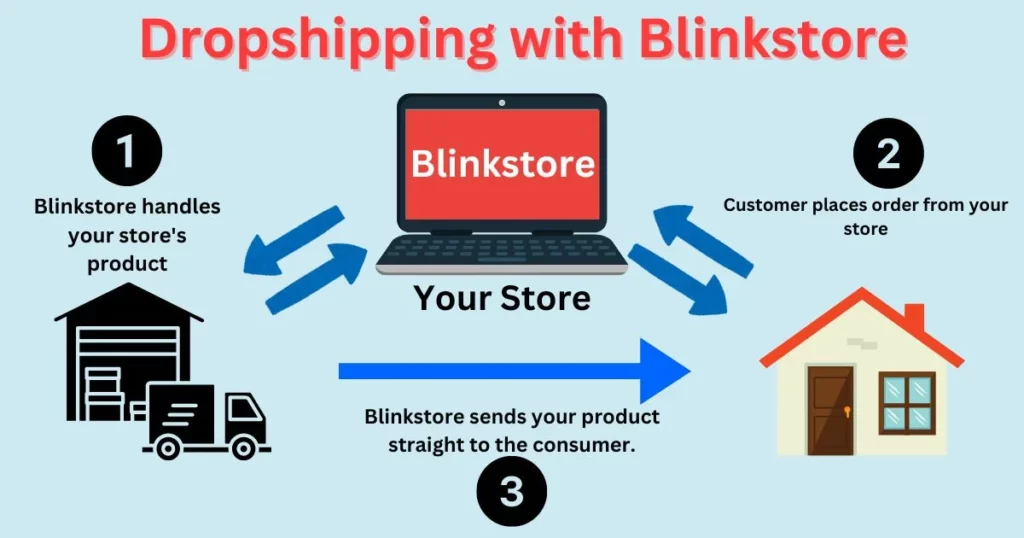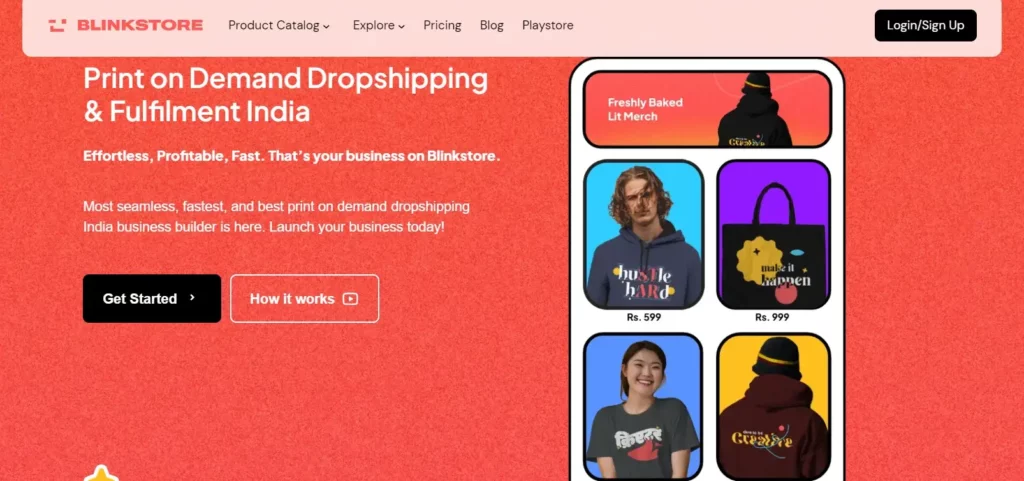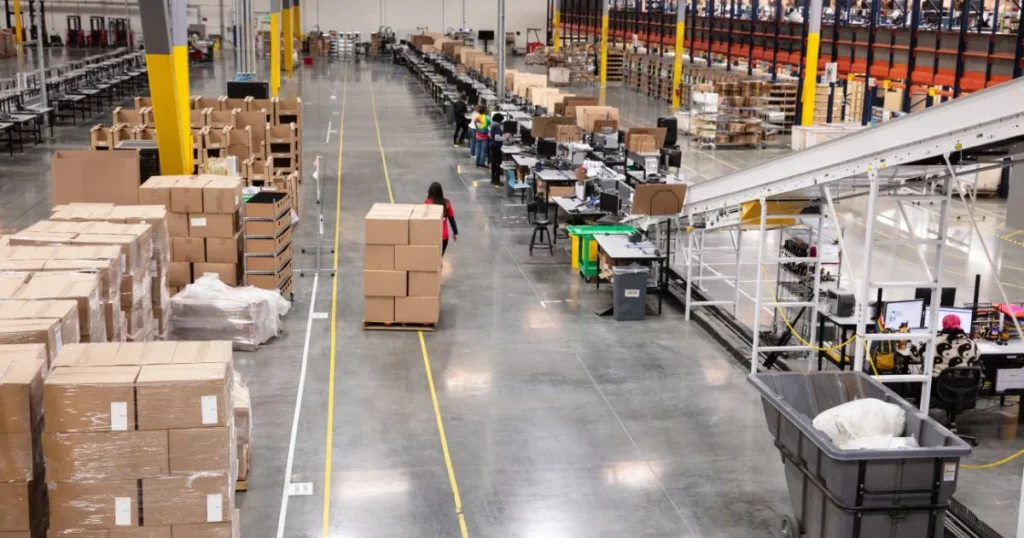Although dropshipping has enjoyed widespread popularity, delving into dropshipping alternatives can unveil fresh pathways to success.
In this blog, we’ll not only explore compelling alternatives to dropshipping but also provide valuable insights and actionable tips.
To help you boost profitability and maintain a competitive edge in the e-commerce arena in 2024.
Table of Contents
The global online sales will reach $6.3 trillion by 2024. If you’re aiming to boost profits, elevate customer experience, or optimize processes.
Then these alternatives present a plethora of avenues for growth. Let’s unveil the top dropshipping alternatives, to grow your business to success and differentiate you in the market.
Why Look for a Dropshipping Alternative?
Exploring alternatives to traditional dropshipping can offer various advantages. Whether you’re seeking greater control or improved product quality for your business.
Alternatives like print on demand might be the perfect fit. You can adjust your strategy to better suit your needs and objectives by taking these dropshipping alternatives into account.
Here’s a breakdown of the common drawbacks of dropshipping that may prompt individuals to explore alternative options:
1. Can’t Check Quality
It’s hard to make sure the stuff you sell is good quality because you don’t see it before it goes to customers.
2. Hard to Stand Out
It’s tough to make your store different from others when you all sell the same things.
3. Not Much Profit
Prices are super competitive, so it’s tricky to make a lot of money.
4. Shipping Can Be a Mess
You can’t control when things get shipped or if there are problems.
5. Relying on Suppliers
Your business depends on how good your suppliers are. If they’re not reliable, you’re in trouble.
Learn more: What is Dropshipping? How does it work? Pros and Cons
What is Dropshipping?
Dropshipping is a retail fulfillment method that doesn’t require stores to keep products in stock. Instead, when a product is sold. It is bought by the store directly from a third party and shipped to the customer. This eliminates the need to handle or store inventory.

How does Dropshipping Work?
Let’s explain with a simple illustration:

Top Dropshipping Alternatives in 2024
- Print on demand
- Private labeling
- In-House Fulfillment
- Affiliate Marketing
- Wholesaling
- Drop Servicing
Now we can explore each dropshipping alternative in-depth:
1. Print on demand

Print on demand enables individuals and businesses to sell products customized to their designs. From apparel to accessories, items are only produced and shipped when orders are placed.
Now with print on demand sites like Blinkstore and Shopify, it is much easier to do print on demand business.
Best Known For
POD shines for its hassle-free approach to selling custom-designed products. By leveraging third-party printers, sellers can offer a wide array of products without the burden of stocking inventory.
Notable Features
Print on demand offers a variety of products to customize, user-friendly design tools, seamless integration with e-commerce platforms, quality assurance measures, and reliable customer support.
Pros:
- No hefty investments in inventory or production equipment.
- Freedom of not fretting over inventory or stockouts.
- Craft unique designs
Cons:
- Unit costs might surpass bulk production
- Ensuring consistent quality poses a challenge with third-party printers.
Price
Pricing varies depending on providers and product types. It typically includes a base price per product plus additional fees for customization and shipping.
Reviews
Despite some downsides like quality control and competition, the low entry barrier and passive income potential make POD appealing.
2. Private labeling

Private labeling involves partnering with manufacturers to produce items under your own brand name.
This model allows for significant customization and control over product quality, packaging, and pricing. It requires an upfront investment but offers higher profit margins and brand loyalty.
Best Known For
Private labeling stands out for enabling entrepreneurs to create unique brands and products. It’s an excellent way to differentiate from competitors and build a strong customer relationship through exclusive offerings.
Notable Features
Key features of private labeling include the ability to customize products and packaging, direct control over the supply chain, and the potential for exclusive product offerings that stand out in the marketplace.
Pros:
- Strong Brand Identity
- Higher Profit Margins
- Control Over Product Quality
Cons:
- Upfront Investment Required
- Longer Time to Market
Price
Costs vary significantly based on product complexity, quantity, and customization level. Initial investments can be higher than dropshipping but are offset by greater control and potential profits.
Reviews
Reviews often highlight the benefits of building a unique brand and the long-term value of customer loyalty. However, some note the challenges of finding reliable manufacturing partners and managing upfront costs.
3. In-House Fulfillment

With in-house fulfillment, businesses store their own inventory. And handle all aspects of the order fulfillment process, including packaging and shipping.
This approach requires space for inventory and a hands-on management style but allows for immediate quality control and customization of the shipping experience.
Best Known For
In-house fulfillment is lauded for its unparalleled control over the entire shipping and handling process. This model is ideal for businesses prioritizing fast shipping, inventory control, and a personalized customer experience.
Notable Features
Key features include the ability to quickly adapt to inventory needs, offer special packaging, and directly manage shipping speed and costs. This leads to enhanced customer satisfaction and potential for brand loyalty.
Pros:
- Complete Control Over Shipping and Handling
- Personalized Packaging
- Immediate Quality Control
Cons:
- Requires Significant Space for Inventory
- Higher Overhead Costs
Price
The cost is variable and largely dependent on the scale of operations, including storage space and shipping volume. While initial costs can be high, the long-term benefits of customer satisfaction and control may justify the investment.
Reviews
Users often appreciate the direct control over the customer experience and the flexibility to implement changes quickly. However, the increased responsibility and costs are noted as significant considerations.
4. Affiliate Marketing

This model involves earning a commission for each sale made through your referral links. It’s an excellent option for those with a strong online presence.
Such as bloggers or social media influencers, looking to monetize their audience without managing inventory or fulfillment.
Best Known For
Affiliate marketing is celebrated for its low entry barrier and the potential to earn passive income by promoting other companies’ products.
Notable Features
The key features of affiliate marketing include the ability to promote a wide array of products without handling them, scalability based on your marketing efforts, and the versatility to work with multiple brands and products.
Pros:
- Low Startup Costs
- Passive Income Potential
- Flexible and Scalable
Cons:
- Dependent on Third-Party Products
- Earnings Tied to Performance
Price
There’s minimal financial investment required to start, primarily in building and maintaining a platform to promote products. The main ‘cost’ is the time and effort needed to create content and grow an audience.
Reviews
Positive reviews often mention the ease of starting and the potential for significant income with the right strategy and audience. Critical reviews may highlight the challenges of building and maintaining an engaged audience.
5. Wholesaling

This model involves buying large quantities of products directly from manufacturers or distributors at discounted rates and then selling them to retailers or directly to consumers.
It requires a larger upfront investment and storage space but allows for significant control over inventory and pricing.
Best Known For
Wholesaling is recognized for its ability to provide entrepreneurs with the opportunity to purchase products in bulk at a lower cost and sell them at a markup, offering a potentially high return on investment.
Notable Features
Key features of wholesaling include bulk purchasing at discounted rates, the opportunity to build relationships with manufacturers, and the ability to set retail prices, which can lead to substantial profit margins.
Pros:
- Higher Profit Margins
- Direct Control Over Inventory
- Potential for Large-Scale Sales
Cons:
- Requires Significant Upfront Investment
- Need for Storage Space
Price
The initial investment can be considerable, depending on the scale of operation and the products being wholesaled. However, the bulk purchase discounts can lead to high profit margins over time.
Reviews
Reviews often highlight the potential for high returns on investment and the benefits of control over the sales process. However, challenges such as managing inventory and the need for significant initial capital are also noted.
6. Drop Servicing

In this model, a business markets services, such as digital marketing or graphic design, and then outsources the actual work to freelancers or agencies at a lower cost.
It requires minimal physical infrastructure and allows for a focus on customer acquisition and service quality.
Best Known For
Drop servicing, also known as service arbitrage, is celebrated for its low barrier to entry and the potential to earn profits by outsourcing services at a markup.
Notable Features
Key features include the ability to offer a wide range of services without specific expertise, the potential for high profit margins through service arbitrage, and the flexibility to scale the business based on demand.
Pros:
- Low Startup Costs
- High Scalability Potential
- Flexibility in Service Offering
Cons:
- Dependent on Quality of Contractors
- Need for Effective Client Management
Price
The primary costs are associated with marketing and potentially paying subcontractors before receiving payment from clients. These costs are relatively low compared to models requiring inventory or significant upfront investment.
Reviews
Positive reviews often focus on the scalability and flexibility of the business model. As well as the potential for high-profit margins. Negative feedback may center on challenges related to managing subcontractors and maintaining consistent service quality.

Other Dropshipping Alternatives
Now that our top picks are over, let’s look at some other alternatives for dropshipping:
7. White Labeling
What’s It About?
White labeling means putting your brand on existing products, giving you the power to customize them with your logo and packaging.
Why Go For It?
Take charge of product quality and branding, crafting a unique identity for your offerings.
Pro Tip: Research market demand and competition levels for smooth sailing with white labeling.
8. Direct-to-Consumer (DTC)
What’s It About?
DTC lets you sell directly to customers, cutting out middlemen for bigger profits and better customer connections.
Why Go For It?
Maintain a larger portion of your hard-earned money and forge closer ties with your devoted fan following.
Tool Recommendation: Harness CRM software for personalized customer interactions that keep them coming back.
9. Selling Digital Products
What’s It About?
Think eBooks, courses, or software—selling digital goods means cashing in on your expertise without dealing with physical stuff.
Why Go For It?
Scale up with ease, all while keeping overheads low and reaching a global audience.
Pro Tip: Sweeten the deal with bonus content to amp up the value and attract a bigger crowd.
10. Blogging
What’s It About?
Share your wisdom and rake in the dough with ads, affiliate marketing, and sponsored content. While establishing yourself as a niche authority.
Why Go For It?
Drive traffic, boost credibility, and enjoy that sweet, sweet passive income.
Statistic: Businesses that blog bag 67% more leads per month. That’s some serious clout!
11. Online Freelancing
What’s It About?
Take your skills freelance and ride solo on platforms like Upwork or Fiverr, offering everything from writing to design.
Why Go For It?
Embrace flexibility, freedom, and the chance to diversify your income across multiple talents.
Tool Recommendation: Keep things shipshape with project management tools like Trello or Asana to nail deadlines and wow clients.
Final Thoughts
While dropshipping has its perks, exploring other dropshipping alternatives is key to boosting profits and staying competitive in e-commerce.
Whether you go for print-on-demand, white labeling, wholesale, affiliate marketing, in-house fulfillment, or drop servicing, each option offers its advantages.
Hope this guide helped decide on your dropshipping alternative.
FAQs on Dropshipping Alternatives
These are some frequently asked questions concerning dropshipping alternatives.
What is better than dropshipping?
While dropshipping can be lucrative, alternative methods like print-on-demand (POD), white labeling, and wholesale can offer more control over product quality and customer experience, potentially leading to higher profitability.
Is dropshipping still worthy?
Dropshipping can still be a viable option for certain businesses, but it’s essential to consider factors like market saturation, competition, and evolving consumer trends. Exploring other strategies alongside dropshipping can help diversify revenue streams and mitigate risks.
Is there a better alternative to AliExpress?
Yes, there are several alternatives to AliExpress for sourcing products, such as Alibaba, Oberlo, SaleHoo, and Spocket. These platforms offer a wider range of suppliers, better quality control, and faster shipping options, making them viable alternatives for dropshipping businesses.
What is the best option for dropshipping?
The best option for dropshipping depends on factors like your niche and business goals. Popular options include print on demand, wholesale, and fulfillment by Amazon (FBA). Research each to find what suits you best.
Is dropshipping too risky?
Dropshipping has risks like product quality issues and shipping delays. But with planning and research, many find it profitable. Just weigh the risks against the rewards.
What’s more profitable than dropshipping?
Options like print on demand and wholesale can offer higher profits. They allow more control over product quality and branding. But it depends on your business goals and target market.
